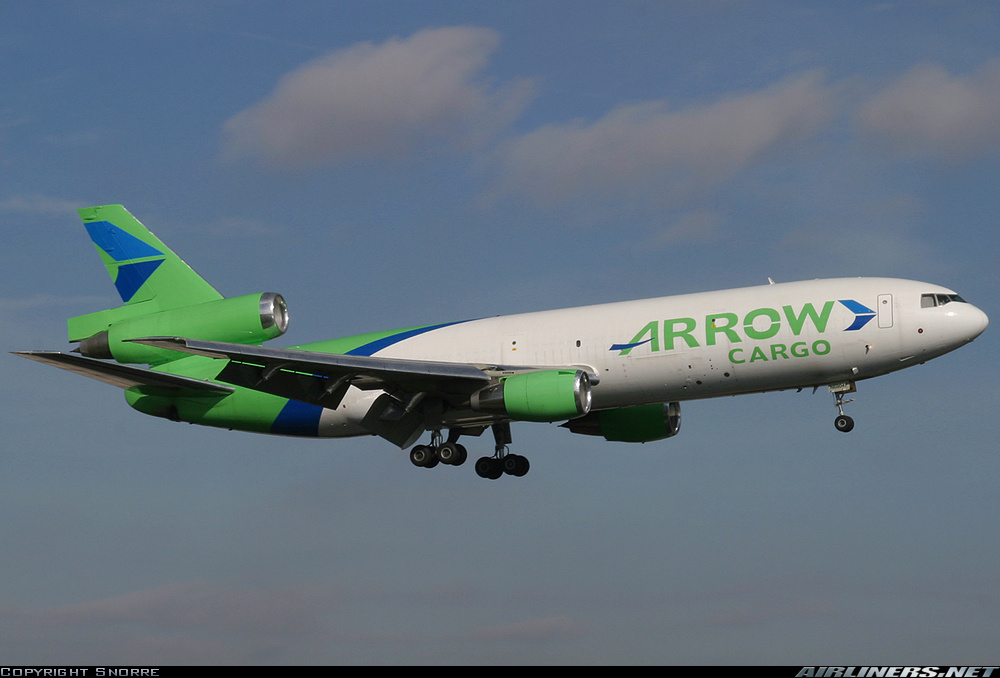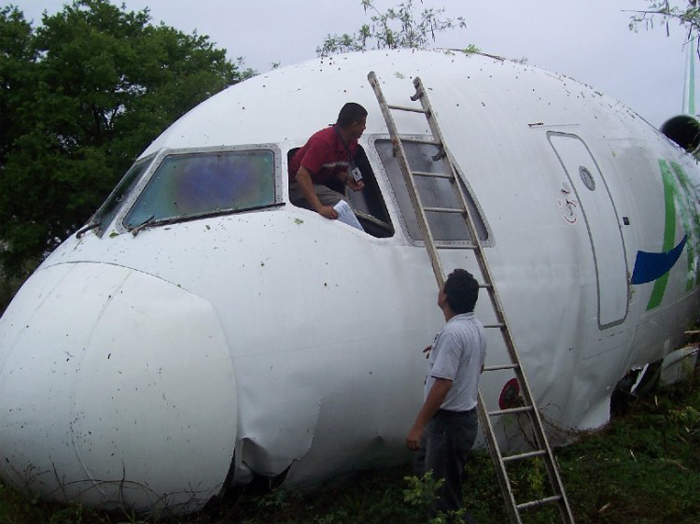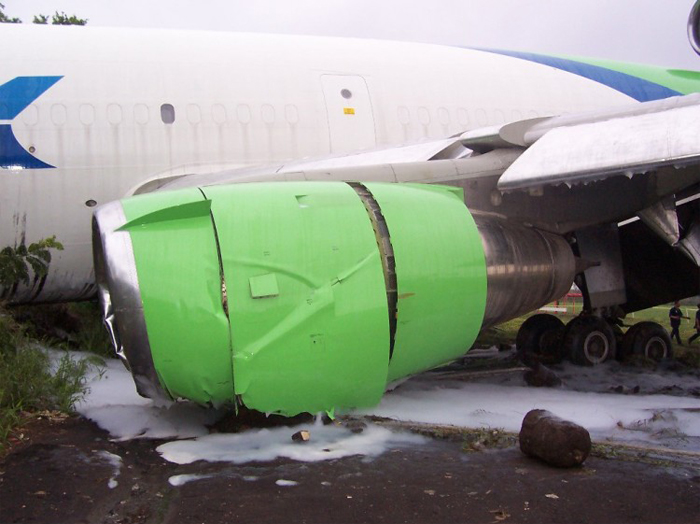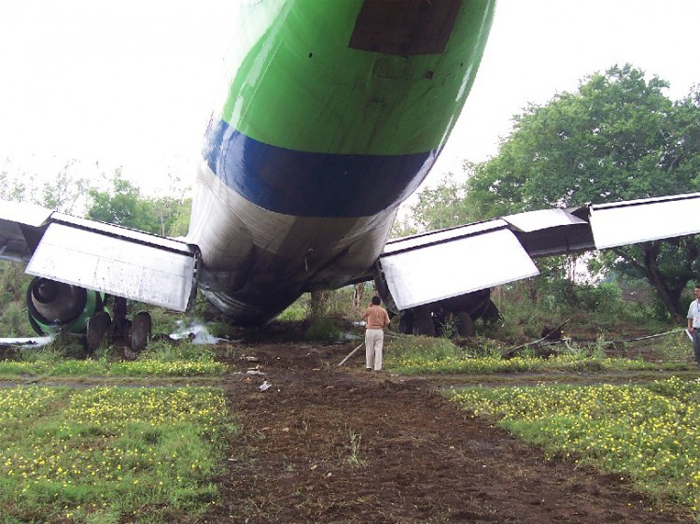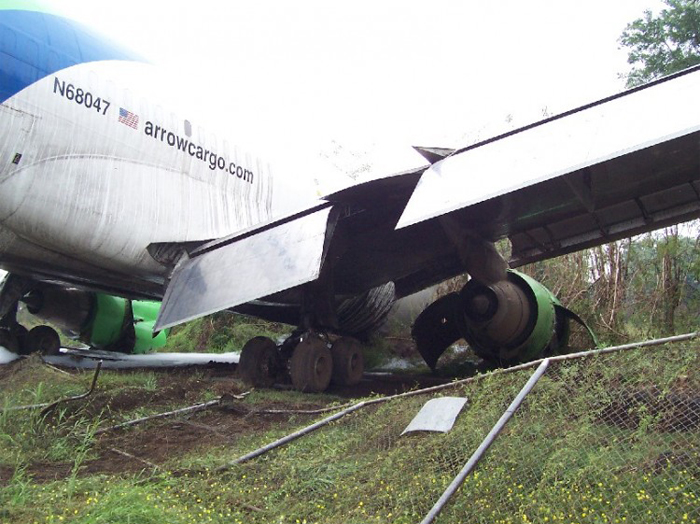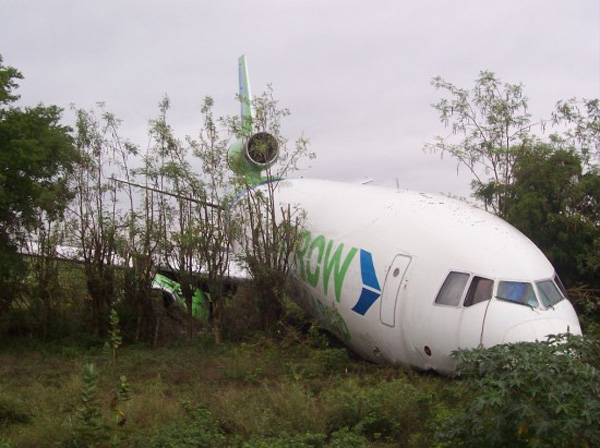Country
Crash of a Douglas DC-10-30ER in Baltimore
Date & Time:
May 6, 2009 at 1302 LT
Registration:
N139WA
Survivors:
Yes
Schedule:
Leipzig – Baltimore
MSN:
46583/292
YOM:
1979
Flight number:
WOA8535
Crew on board:
12
Crew fatalities:
Pax on board:
168
Pax fatalities:
Other fatalities:
Total fatalities:
0
Captain / Total hours on type:
193.00
Copilot / Total hours on type:
373
Aircraft flight hours:
107814
Circumstances:
The flight was conducting a straight-in approach during visual meteorological conditions. The approach was backed up by an ILS and was stable at 500 feet above touchdown. The initial touchdown was firm and main landing gear rebounded, possibly bouncing slightly off the runway. Control column input and possibly momentum from the touchdown resulted in a rapid pitch down and hard nose gear impact with the runway. Wing spoilers likely did not deploy due to the main gear bounce and/or throttle position. Following the nose gear impact, the airplane pitched up as expected and the column was held in a slightly forward position. Airspeed rapidly decayed, and engine power began to increase as the airplane pitch reversed to a downward motion for a second time. One of the crew, likely the FO, called “flare flare” and the column recorded a rapid nose up input, followed by a rapid nose down input, and the nose gear again struck the runway very hard, likely causing the majority of the damage at that point. Following the second nose gear impact, column inputs stabilized at a slightly nose up command, power was set on all three engines, and the go-around was successfully executed. A slight lag in the power increase on engine number 3 may have contributed to the nose down motion leading to the second nose gear impact, although the large forward (airplane nose down) column movement appears to be a much more significant contributor. It is unclear why the engine was slower to increase. Throttle lever angle was not recorded, but the engine operated as expected for all other phases of the flight, including after the impact, therefore it is possible the pilot did not advance the number 3 throttle concurrently with the others. The captain’s flight and duty schedule complied with Federal Aviation regulations, but he experienced a demanding 10-day trip schedule prior to the incident involving multiple time zone crossings and several long duty periods, and reported difficulties sleeping prior to the accident leg. The captain was likely further affected by a digestive system upset during the accident flight. It is likely that the captain’s performance was degraded by fatigue and some degree of physical discomfort brought on by a short-term illness. The captain had recently completed upgrade training to DC-10, having previously been flying as an MD-11 first officer. The training program was fragmented over approximately ten months, and while in accordance with FAA regulations, may have adversely affected his consolidation of skills and experience.
Probable cause:
The captain’s inappropriate control inputs following a firm landing, resulting in two hard nose-gear impacts before executing a go-around. Contributing to the inappropriate control inputs was the captain’s fatigue and physical discomfort; and a possible lack of practical consolidation of skills and experience due to a protracted and fragmented training period.
Final Report:
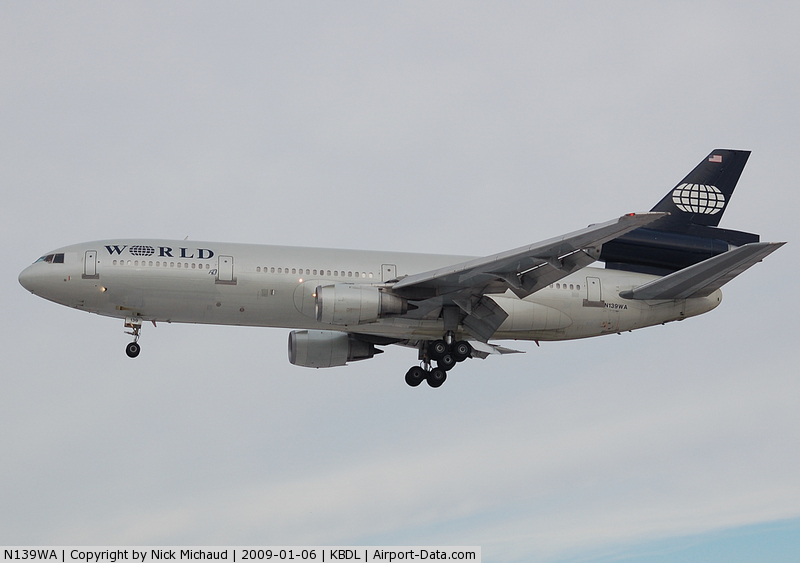
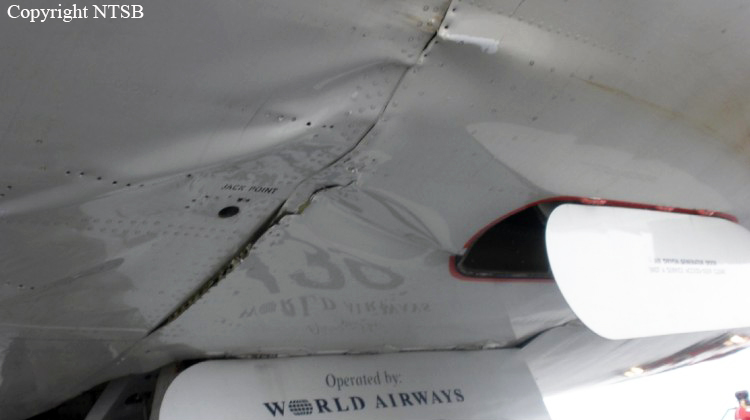
Crash of a Douglas DC-10-10F in Memphis
Date & Time:
Jul 28, 2006 at 1125 LT
Registration:
N391FE
Survivors:
Yes
Schedule:
Seattle - Memphis
MSN:
46625/169
YOM:
1975
Flight number:
FDX630
Crew on board:
3
Crew fatalities:
Pax on board:
0
Pax fatalities:
Other fatalities:
Total fatalities:
0
Captain / Total hours on type:
4402.00
Copilot / Total hours on type:
244
Aircraft flight hours:
73283
Aircraft flight cycles:
27002
Circumstances:
The approach and landing were stabilized and within specified limits. Recorded data indicates that the loads experienced by the landing gear at touchdown were within the certification limits for an intact landing gear without any pre-existing cracks or flaws. The weather and runway conditions did not affect the landing. The application of braking by the accident crew, and the overall effect of the carbon brake modification did not initiate or contribute to the landing gear fracture. Post-accident modifications to the MD-10 carbon brake system were implemented due to investigative findings for the purposes of braking effectiveness and reliability. Post accident emergency response by the flight crew and ARFF was timely and correct. The left main landing gear (LMLG) outer cylinder on the accident airplane had been operated about 8 ½ years since its last overhaul where stray nickel plating likely was introduced in the air filler valve hole. Nickel plating is a permissible procedure for maintaining the tolerances of the inner diameter of the outer gear cylinder, however the plating is not allowed in the air filler valve bore hole. Literature and test research revealed that a nickel plating thickness of 0.008" results in a stress factor increase of 35%. At some point in the life of the LMLG, there was a load event that compressively yielded the material in the vicinity of the air filler valve hole causing a residual tension stress. During normal operations the stress levels in the air filler valve hole were likely within the design envelope, but the addition of the residual stress and the stress intensity factor due to the nickel increased these to a level high enough to initiate and grow a fatigue crack on each side of the air filler valve hole. The stresses at the air filler valve hole were examined via development of a Finite Element Model (FEM) which was validated with data gathered from an instrumented in-service FedEx MD-10 airplane. The in-service data and FEM showed that for all of the conditions, the stress in the air filler valve hole was much higher than anticipated in the design of the outer cylinder. Fatigue analysis of the in service findings and using the nickel plating factor resulted in a significantly reduced fatigue life of the gear cylinder compared with the certification limits. During the accident landing the spring back loads on the LMLG were sufficient to produce a stress level in the air filler valve hole that exceeded the residual strength of the material with the fatigue cracks present.
Probable cause:
The failure of the left main landing gear due to fatigue cracking in the air filler valve hole on the aft side of the landing gear. The fatigue cracking occurred due to the presence of stray nickel plating in the air filler valve hole. Contributing to this was the inadequate maintenance procedures to prevent nickel plating from entering the air filler valve hole during overhaul.
Final Report:
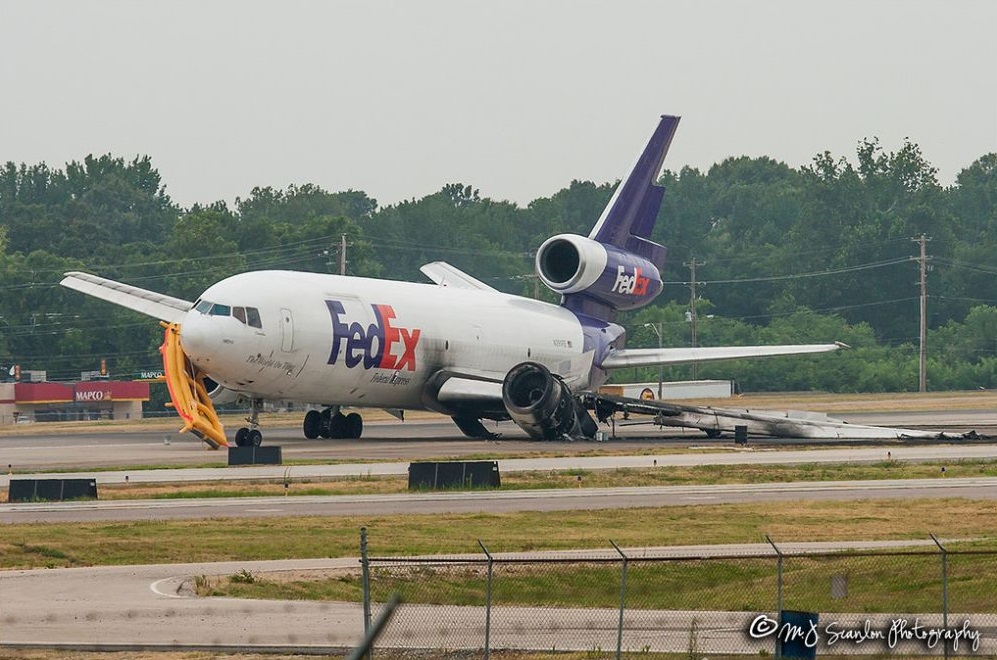
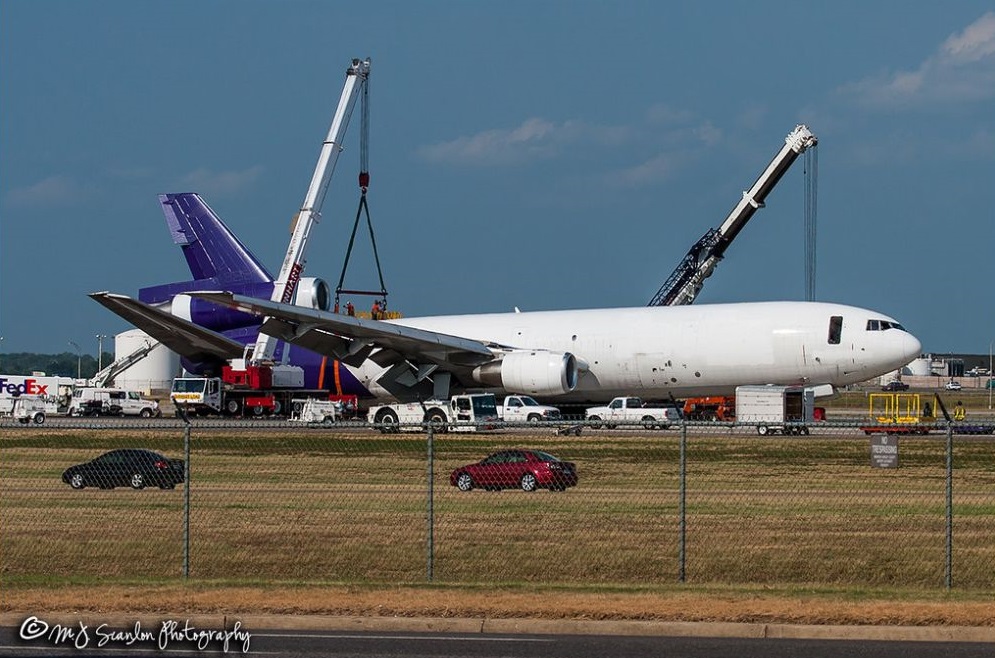
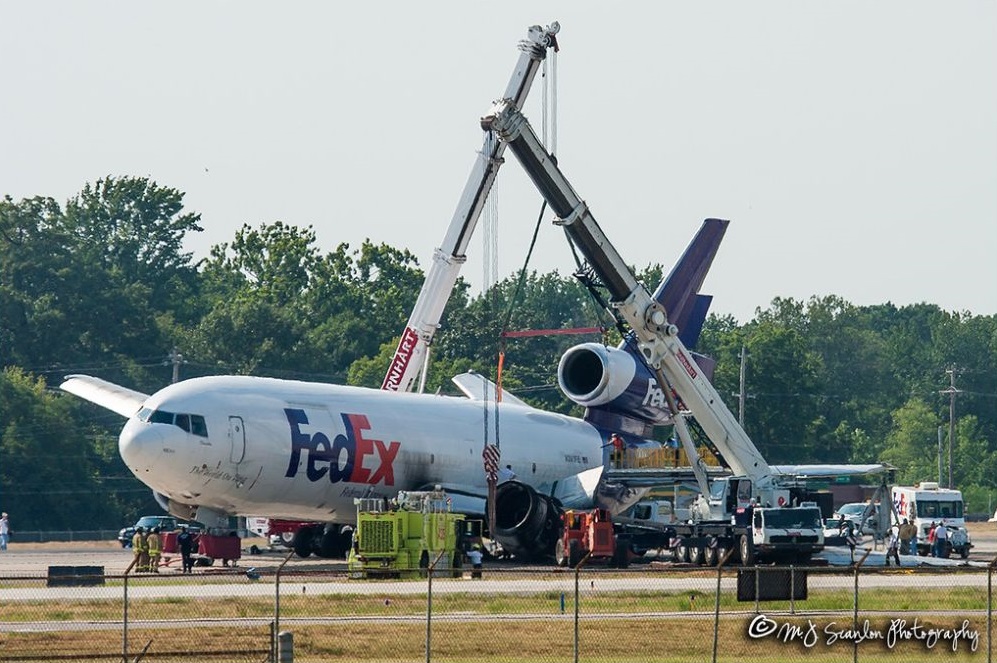
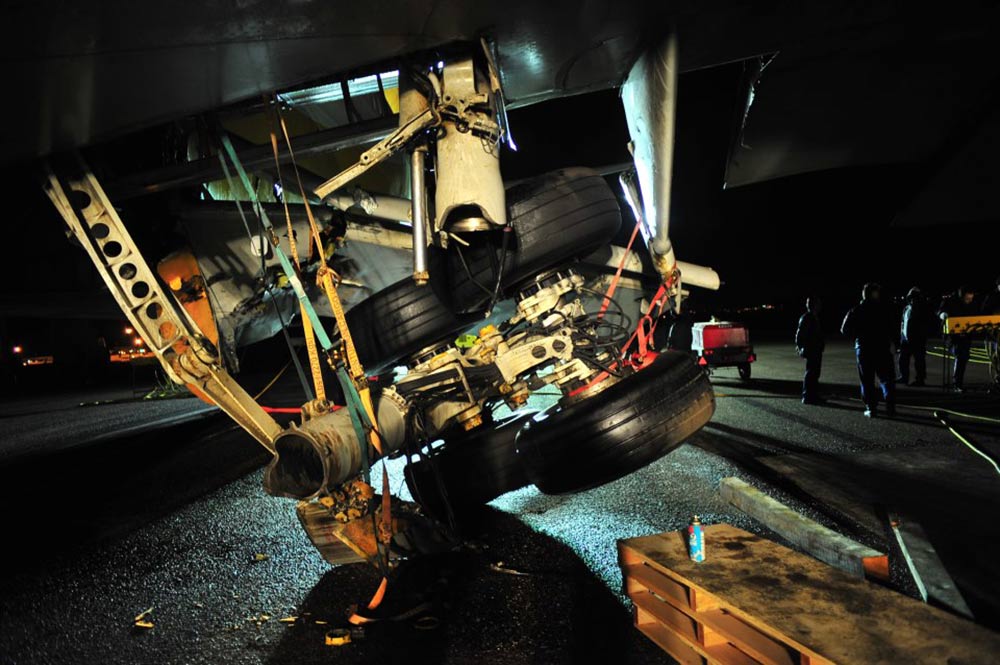
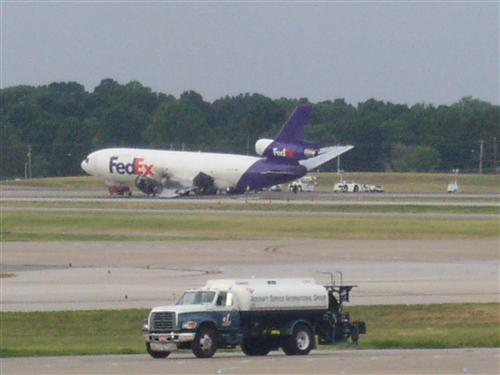
Crash of a Douglas DC-10-10F in Managua
Date & Time:
Jun 4, 2006 at 0510 LT
Registration:
N68047
Survivors:
Yes
Schedule:
Miami - Managua
MSN:
47801/98
YOM:
1973
Crew on board:
3
Crew fatalities:
Pax on board:
0
Pax fatalities:
Other fatalities:
Total fatalities:
0
Circumstances:
The aircraft departed Miami-Intl Airport on a night cargo flight to Managua, carrying three crew members and a load consisting of 50 tons of chemical and toxic products. After touchdown on runway 09 which is 2,450 metres long, the aircraft was unable to stop within the remaining distance. It overran, went through a fence, lost its nose gear and came to rest 350 metres further in trees. All three crew members escaped uninjured while the aircraft was damaged beyond repair.
